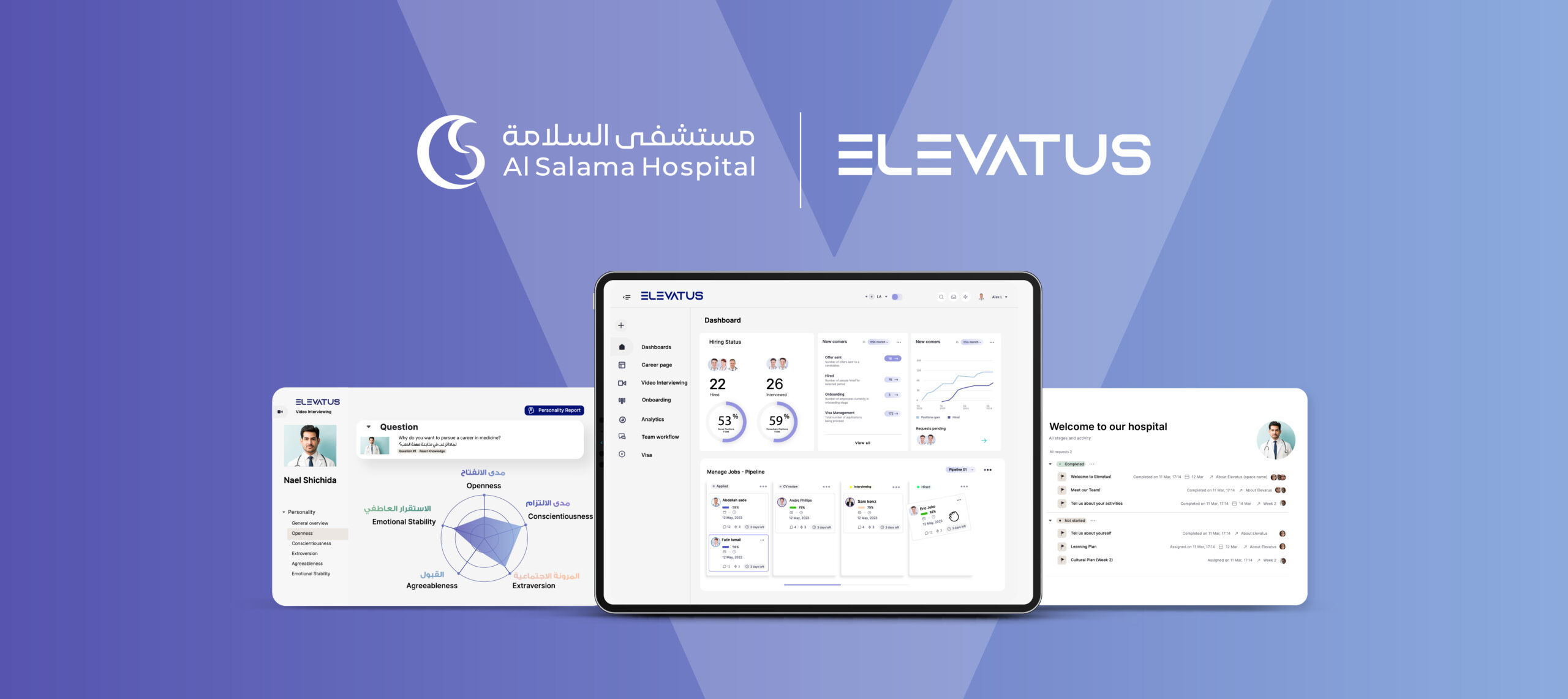
HR Resources
Uncovering the Underlying Triggers and Hidden Causes of Employee Attrition: Decoding the Departure of Valuable Talent.
July 24, 2023
Reem Al-Tamimi
Content Writer
Employee turnover can be a costly conundrum for organizations, especially when poor management is thrown into the mix. This combination fuels skyrocketing attrition rates, draining a company of up to 33% of an employee’s total compensation, as revealed by the U.S. Bureau of Labor Statistics. However, the impact goes beyond financial losses. Employee morale takes a hit, leading to decreased efficiency and effectiveness in the workplace.
To combat turnover, organizations must dig deep and uncover the causes of employee attrition. Here’s a spoiler: good employees don’t abandon ship solely because the organization is terrible; they escape the clutches of poor management. Just think about the Great Resignation of 2021, when over 40% of employees were convinced with the idea of switching jobs, and an astounding 24 million workers actually took the leap.
To prevent the recurrence of such incidents, this blog takes you on a captivating journey to uncover the underlying factors responsible for employee attrition. As we navigate through the maze, we will equip you with practical strategies to retain your invaluable talent. Get ready to crack the code of this critical issue and turn the tide on employee attrition. Let’s dive in and ensure your organization thrives with a happy and engaged workforce.
The Importance of Tackling Employee Attrition Causes
The importance of maintaining a healthy attrition rate cannot be underestimated for organizations striving for success. To achieve this, it is crucial to understand what causes employee attrition and implement effective strategies to address them. While there is no one-size-fits-all definition of a “good” attrition rate, businesses generally aim for a rate of 10% or lower.
High attrition rates can have significant negative impacts on companies. They result in the loss of institutional knowledge, reduced productivity, and increased hiring and training costs. Moreover, they may indicate underlying problems within the organization.
Understanding who is leaving the company and why they are leaving is the key to managing employee attrition. By gaining this insight, organizations can make necessary changes to decrease attrition and improve employee retention.
Overall, maintaining a healthy attrition rate ensures a stable workforce and a positive work environment. It enables companies to retain valuable talent and foster long-term success. By addressing the causes of employee attrition, organizations can create a workplace where employees feel valued, engaged, and motivated to stay and contribute to the company’s growth.


Unveiling the Key Causes of Employee Attrition
Employee turnover is expensive and affects morale. To reduce it, organizations must understand the causes of employee attrition. Good employees don’t leave good organizations; they leave due to poor management.
Let’s take a look at the 5 key reasons behind employee attrition. Unlock the secrets to retaining your top talent and creating a thriving workplace.
Lack of career advancement opportunities
One of the major factors contributing to employee attrition is the absence of career advancement opportunities. When employees feel their progress is stagnant and there are no chances for growth, they become disheartened and start exploring other job options. To combat this, organizations must prioritize creating a culture of continuous learning, skill development, and clear career pathways. By offering employees avenues for growth, organizations can retain their talent and keep them engaged and motivated to succeed within the company
Inadequate compensation
While money may not be the primary reason employees leave, it does hold significant sway when they find higher-paying jobs elsewhere. Economic crises often result in halted raises and promotions that are slow to resume. While organizations may not aim to be the highest payers, they must offer competitive wages and benefits while showing employees they are valued. It’s a critical combination. As revenues and profits grow, organizations must reassess their compensation packages. Employees recognize company success and expect to be recognized as essential contributors. Addressing inadequate compensation is vital in mitigating employee attrition.
Poor work-life balance
A never-ending cycle of work, leaving little time for personal life and piling on stress. Unhealthy work-life balance is a key factor driving employee attrition. When work overtakes personal well-being, job performance suffers. Long hours, no time off, lengthy commutes, excessive workloads, and feeling underappreciated contribute to this imbalance. The result? Stress, burnout, unhappiness, and diminished job satisfaction. To break free from the attrition cycle, organizations must prioritize work-life balance, fostering an environment where employees can thrive both personally and professionally. It’s time to restore balance and retain your valued talent.


Lack of recognition or reward
Employee attrition can be fueled by a critical factor: lack of recognition or reward. When organizations fail to appreciate their employees, it takes a toll on morale, motivation, and productivity. Dissatisfied workers are more likely to seek opportunities elsewhere, resulting in higher attrition rates. By neglecting recognition, organizations face performance and cultural challenges. A culture without appreciation tarnishes reputation, making it harder to retain top talent. Productivity suffers, absenteeism rises, and attrition rates soar.
Ineffective management
Poor management and inadequate rewards play a pivotal role in employee attrition. When leadership lacks direction, vision, and clarity, it results in miscommunication, demotivation, decreased productivity, and, ultimately, attrition. At all levels, poor management leads to inefficiency, missed growth opportunities, and sluggish adaptation to external changes. Additionally, it creates an unorganized work environment and fosters a lack of accountability, trust, and respect. These factors contribute to employee dissatisfaction, higher absenteeism, and eventual resignation. Understanding and addressing these causes of employee attrition are crucial in retaining top talent and fostering a positive company culture.
Exploring the Factors Affecting Employee Attrition
Employee attrition is a puzzle influenced by various factors, some of which remain hidden from plain sight. Solving this puzzle is crucial for organizations aiming to reduce turnover and retain their valuable employees.
By gaining insights into the top reasons for employee attrition, organizations can implement effective strategies to mitigate attrition and cultivate a thriving workforce.
Misalignment with company culture
Hiring individuals who lack qualifications and do not align with the company culture is a key contributor to employee attrition. When employees are mismatched with the organization’s values and goals, it often leads to dissatisfaction and, ultimately, their departure. Such misalignment not only hampers productivity but also creates a disconnect between the employee and their work environment. The absence of a cohesive cultural fit undermines employee engagement and loyalty, increasing the likelihood of attrition in the long run.
To address this problem, companies can leverage cutting-edge video interviewing software like EVA-SSESS. This technology goes beyond just looking at a candidate’s resume and qualifications. With one-way video interviews, employers can evaluate a candidate’s communication skills, body language, and overall job competencies. This gives valuable insights into whether they would fit well with the company’s culture. By including video interviews in the hiring process, organizations can make better-informed decisions and improve the likelihood of choosing candidates who align with their values and culture. This approach helps reduce the risk of future attrition caused by cultural mismatches and promotes a more harmonious and engaged workforce.


The dearth of challenge
One of the main causes of employee attrition is the lack of challenge. When employees are not presented with engaging tasks or opportunities for growth, they can become bored and dissatisfied with their work. If there’s no excitement or sense of progress, employees may feel stuck and start looking for new job options. To prevent attrition, employers should offer stimulating projects, professional development programs, and clear paths for advancement. By keeping employees motivated and providing a positive work environment, employers can reduce attrition and retain their valuable staff.
Absence of trust in leadership
Employee attrition factors can be influenced by the absence of trust in leadership. When employees lack trust in their leaders, it creates uncertainty and skepticism. Poor management and leadership practices contribute to a lack of accountability, making it difficult to achieve goals. Moreover, when managers fail to establish trust, it leads to an environment of mistrust and disrespect. Consequently, employees become dissatisfied and less committed to the organization. This lack of trust ultimately increases absenteeism and may eventually prompt employees to resign.
The feeling of being overworked
Feeling overworked is a major cause of employee attrition. When employees constantly face heavy workloads and long hours without enough rest or balance, it leads to stress and burnout. This makes them feel overwhelmed, exhausted, and unappreciated, resulting in reduced productivity and motivation. To prevent attrition, companies must manage workloads better, create a healthy work environment, and provide support for employees who feel burdened. Prioritizing these measures can help address the causes of employee attrition and improve employee satisfaction and retention.
Lack of flexibility
In today’s fast-paced work environment, employees greatly value the ability to balance their personal and professional lives. When companies fail to offer flexible work schedules or remote work options or fail to accommodate unforeseen circumstances, employees feel trapped and start looking for opportunities elsewhere. To address this issue, organizations must remain open-minded and adaptable. By implementing new policies, actively listening to employee feedback, and finding innovative solutions, companies can create a supportive work culture that retains their valuable talent.


The Bottom Line
In the quest to reduce employee attrition and retain valuable talent, addressing the underlying causes becomes paramount. Factors like misalignment with company culture can lead to dissatisfaction and turnover. By recognizing and tackling these unseen causes, organizations create an environment where employees feel valued, motivated, and committed. This fosters a positive work culture, higher productivity, and increased employee satisfaction.
Don’t overlook the hidden causes of employee attrition – by understanding and addressing them. Organizations pave the way for long-term success and a thriving workforce.
Looking to fuel your hiring success and curb employee attrition? Look no further!
EVA-SSESS is the cutting-edge video interviewing software revolutionizing how enterprises discover, recruit, and nurture exceptional talent at lightning speed. With the power of advanced AI technology, EVA-SSESS provides an immersive assessment experience, unlocking deep insights and unleashing the potential of candidates. Harnessing the precision of video-based evaluations and scientifically validated psychometric reports, it enables enterprises to effortlessly customize assessments, pinpoint ideal keywords, rank applicants with precision, weed out wrong answers, and evaluate those elusive skills that are notoriously hard to gauge. Don’t miss out. Request a free demo now!
Turn top talent to employees fast
Hire, assess, onboard and manage top talent for every job. See how Elevatus streamlines everything; from acquire to new hire.
Request a demoAuthor
Reem Al-Tamimi
Don't miss a thing!
Stay one step ahead. Subscribe and get the latest updates, news, and insights from Elevatus straight to your inbox.






